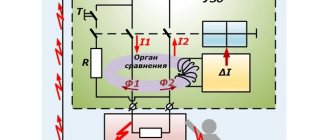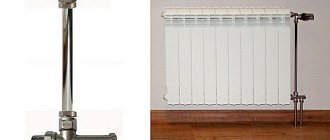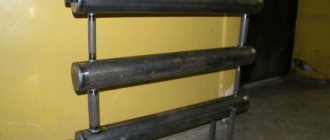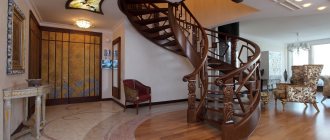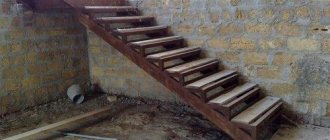Among the trinkets of athletes and gymnasts, athletes and masters, you can find a funny toy - a turnstile. In a private conversation, the owners admit: it all started with her, it would be cool to turn around like that. We were looking for a suitable crossbar, then - Youth Sports School, diligence, perseverance, great sport.
However, even without dreams of championships and Olympics, even in adulthood, the horizontal bar will help maintain a healthy mind in a healthy body. This is the most affordable of sports equipment, but with quite wide capabilities; Moreover, it is possible to make a sports crossbar - a horizontal bar - yourself and practice on it at home.
Note: any sports equipment is not an object for intuitive self-creativity. Violation of this rule may result in injury. Therefore, if you do not have the opportunity to correctly calculate the dimensions of the parts, select the material and assembly technology for them, and then conduct full tests, you must strictly follow the tested samples.
On a note
A reliable prototype, tools, working skills and at least a corner in the garage for a workshop are the key to success. But to make a good horizontal bar with your own hands, you must keep the following in mind:
- Welded seams do not become loose, however, when the operating load parameters exceed the limit values and/or undesirable external influences, they are prone to sudden destruction.
- Mechanical loads are concentrated in the corners of structures.
- A square pipe is stiffer than a round pipe, with a diameter the diagonal of a square, made of the same material, with the same wall thickness, but if the tensile strength of the material is exceeded, the square pipe sharply collapses, while the round pipe most often bends quite smoothly.
- Wood for parts bearing main alternating loads is unsuitable for a number of reasons, with a few exceptions.
We will look further at how these circumstances are taken into account in practice using examples of finished products.
What metal should I use?
Reliability is the key to success, a good motto for installing your own horizontal bar. You can use ordinary ferrous metal. After the welding process, it is cleaned, processed and painted.
For an outdoor horizontal bar, you should also take care of the anti-corrosion coating. You should use powder paint; it will slip less in your hand when doing pull-ups.
Note!
Do-it-yourself winch: classification, manufacturing materials, description of work stages + instructions for DIY constructionDo-it-yourself clamp - step-by-step production and description of options for using a clamp
DIY knife | A step-by-step description of how and from what materials to make a homemade knife
The second option is to use stainless steel. The only negative is the potential surface is too smooth, which can cause excessive slipping of the hand.
Attention: do not use food-grade stainless steel - it is made with thin walls and will bend quickly.
Get straight to the point
Drawings of a homemade horizontal bar with the ability to perform basic exercises for the press, well known in RuNet, are shown in Fig. The secret of its popularity is the availability of materials, well-thought-out design and sizes (see more about them below), corresponding to the average anthropometry of home exercise enthusiasts in the Russian Federation. This projectile is suspended from the wall on hook brackets similar to those on the trail. Fig., but for a square pipe. To preserve the finish of the wall, it is advisable to cover the surfaces in contact with it with rubber 3-5 mm thick. Welding seams are marked in red.
Homemade horizontal bar parallel bars-press
Horizontal bar on the trail. rice. could well be a prototype of the previous one, but made of a round seamless pipe of chromium-nickel steel, something like 79НХС. Food grade stainless steel is not suitable, it is fragile! The special material made it possible to reduce the struts and sections of the parts, which made this horizontal bar more aesthetically pleasing and lighter (14 kg versus 18). But its manufacture requires solid welding experience. Please note that the bending radius of the brackets on the inside is 0.2 mm less than the diameter of the pipe: this, if used carefully, guarantees against play for 3-5 years.
Drawings of a horizontal bar press made of a round pipe
Note: about the handles in both cases, see below.
What is this anyway?
Both of them are wall-mounted horizontal bars of the crossbar-parallels-press type: on this you can perform some exercises without swinging your legs. However, their basic set is quite extensive (see at the end), allows you to maintain your shape at home: in the position of the parallel bars, as on the left in the figure, you can do weighted push-ups and hold an angle, with or without “scissors”, and in the position of the horizontal bar , as in the center, perform a variety of pull-ups with 3 grips: wide, medium and narrow.
Design and dimensions of the parallel bars-press horizontal bar
The basic size of the parallel bars-press horizontal bar to choose when purchasing or recalculating the dimensions of the prototype for yourself is the distance between the ends of the handles for a wide grip (110 cm on the right in the figure): in order for the benefit from the exercise to be maximum, it must be equal to the size of the fly fathom of the practitioner, cm Figure in Fig. If there are several athletes in the family - the size of the fly fathom of the largest one. The remaining dimensions change proportionally, except for the height of the handles for gripping on the uneven bars; size 12 cm, see fig. When reading further, also keep in mind that all sizes can be adjusted to suit you in proportion to the basic ones.
The 3-in-1 floor horizontal bar provides more options, see next. Fig : bench press supports allow you to add a whole range of exercises. However, simple 3-in-1 floor horizontal bars (three positions from left to right in the figure) are not designed for use in residential premises, because For proper stability, they require reliable fastening to the floor and a load-bearing capacity of the floor of 400 kgf/sq.m. m, while its norm for residential premises is 250 kgf/sq. m.
Floor horizontal bar 3 in 1
However, it is possible to install a floor horizontal bar in an apartment if you make it detachable, as on the right in the figure: the upper part with the crossbar is attached to the wall, as described below, and the lower part - bars and supports for the "rest" - to the upper part with bolts or cap hooks . Then the flooring can be anything, the load on it will not exceed “residential” 250 kgf/sq.m. m, and the lower part of the projectile can be removed for cleaning or work in the room.
Note: if there is an acute lack of space, a simple horizontal bar in a doorway or corridor can help you stay in shape. We'll talk about these in more detail later.
Video description
You can see how to weld an outdoor horizontal bar in the video:
Installation of a homemade horizontal bar will take place in several steps:
- First, the structure itself is welded. This must be done before installation, since welding at height is unsafe. Welding must be done carefully, without skipping.
- Then holes are dug in the ground in the right places. A layer of sand 10-15 cm thick is poured onto the bottom and compacted.
- The horizontal bar is installed in place, check the evenness of the installation using a plumb line or level.
- Fill the holes with a concrete solution, secure the structure with wooden supports so that it does not fall, and leave until completely dry.
- At the end, sand is poured near the pillars and between them to level and secure the horizontal bar.
If the vertical posts are made of wood, then they are first installed and cemented, and then the vertical crossbar is secured.
In the house
A wall-mounted horizontal bar may look like a crossbar attached between two side bases, but more often they try to complicate it, for example, make it longer and bend it on the sides at a slight angle, adding handles at the bottom.
How to make them?
Now we know enough to choose a suitable design. To make a horizontal bar at home, all you have to do is figure out the materials and technology. Perhaps the requirements listed below may seem redundant to some, but keep in mind: the horizontal bar can be used by a fairly massive, energetic and trained person. Responsibility for all potential undesirable consequences will fall entirely on the manufacturer, because The legislation does not provide for certification of homemade sports equipment, although making them for one’s own use is not prohibited.
About loads
Already when pulling up, a short-term mechanical load on the horizontal bar can reach 2.5 times the weight of the student, i.e. up to 200 or more kgf. When performing relatively simple exercises such as inversions or muscle-ups, this value doubles. Gymnastic bars, on which you can spin the sun, are designed for instantaneous loads of 1200-1700 kgf, and, nevertheless, cases when the bar came off the horizontal bar in competitions are known. Therefore, a home horizontal bar for slow exercises without a swing should hold at least 200-250 kg, and a street bar should hold at least three to four times more.
Pipes and profiles
For the parts of the horizontal bar for gripping, steel pipes with a diameter of 26-40 mm are used. To determine it more accurately, measure the width of the palm at the level of the bases of the fingers and multiply by 3.3. The pipes are thicker or no longer provide a reliable grip, and the effectiveness of the exercise will decrease. Taking into account the minimum required load-bearing capacity indicated above, the wall thickness of a pipe made of ordinary structural steel should be from 2 mm for a home horizontal bar and from 3 mm for an outdoor horizontal bar, and a seamless one made of special steel - from 1.5 mm. It cannot be thinner for reasons of resistance to alternating loads, even if the material is stiffer than carbon.
Very good round tubes for sports equipment are sometimes found in the cornices of old curtains and curtains, but not just any kind. Products from the era of Brezhnev's heyday of stagnation are definitely rejected; They are easily recognized by a clearly visible seam and poor-quality, blistering and flaking coating. But among the remnants of the Gorbachev-perestroika conversion, there are those that, perhaps, the world's leading intelligence agencies are still unsuccessfully hunting for the secrets of their alloys.
Square steel pipes for indoor horizontal bars are applicable from 40x40x2, and for outdoor ones - from 50x50x3 or from 60x60x2. The racks of the latter can also be made from a round pipe from 80x2. If the pipes are square, then they must have rounded corners. Pipes with sharp corners are designed to withstand pressure from the inside, say, in pipelines, but under external load they are unreliable and can suddenly, without the appearance of visible warning signs, become crushed and fractured.
Briefly about the main thing
The horizontal bar is one of the simplest and most useful sports equipment. It is easy to assemble it yourself from scrap materials and install it in the house or on the street.
Before starting assembly, it is important to decide on the location, material, dimensions and design itself. The dimensions depend on who will be exercising (for children you need to make the horizontal bar lower), the design depends on the desire of the owner.
You can assemble the projectile yourself, the main thing is to choose the right material (it must withstand loads) and carefully weld all the parts. If the welding is not perfect, the horizontal bar may fall apart.
The simplest outdoor version of a horizontal bar is a crossbar between trees or a U-shaped structure made of metal pipes. The homemade projectile will look a little more complicated, but it is not difficult to assemble.
Horizontal bars-press in the house
Now let's see how to securely hang the horizontal bar on the wall, because... It is she who will be the weak link here. Weak walls are definitely not suitable for home sports equipment: walls made of PHB, foam blocks, cinder blocks, aerated concrete, wooden panel or composite (SIP panels, for example), plasterboard or plywood on a frame, etc. It is also highly undesirable to hang the horizontal bar on solid stone (load-bearing) walls, because this may cause cracks to appear in them. In some countries, for this reason, the use of wall-mounted sports equipment in everyday life is generally prohibited. That is, we are left with only concrete or brick partitions and walls made of timber or logs.
Long-term load-bearing capacity of one attachment point to the wall, incl. for bending and shear, should be no less than the magnitude of a jerk with the back of a physically normally developed adult man; this is approximately 130 kgf. From the fastener side, so to speak, it is provided by M8 bolts in steel collet anchors. Self-tapping screws in plastic dowels are definitely not suitable! In a solid wall (without taking into account the thickness of the finish), the anchor must sit (i.e. be embedded in the wall) at least:
- 120 mm – in a concrete wall.
- 150 mm – in brick.
- 180 mm – in solid timber made of durable wood (oak, etc.).
- 220 mm - in a wall made of coniferous wood or glued timber.
The M8 bolt can protrude outward from the anchor by no more than 20 mm. If the thickness of the finish plus the bracket exceeds this value, you need to take fasteners of a correspondingly larger standard size - M10, M12, M16, etc.
It remains to calculate the number of attachment points. Their total load-bearing capacity must not be lower than the operational load on the horizontal bar, multiplied by 2.5. For example, a horizontal bar is designed for 200 kg. The fastenings together should hold from 200x2.5 = 500 kgf. Divide by the load-bearing capacity of one (130 kgf), we get 500/130 = 3.846; round up to the nearest higher - we need at least 4 attachment points. The distance between them in a brick or concrete wall is from 0.7 times the anchor is inserted into the wall.
Suspension height
State fathom
The last point before starting work on the manufacture of the horizontal bar is that you need to find its mounting (installation) dimensions in the room. The figure above shows how to find the basic design size of a 3-in-1 horizontal bar; Below we will see how the basic dimensions of a street horizontal bar are determined based on other types of fathoms. And another fathom - the official one - will help you find a suitable place for a home horizontal bar on the wall.
What a government fathom is is clear from Fig. on right; The raised arm should be fully extended. It is the individual breech fathom of the tallest person in the family that is the optimal height for the crossbar. They check it by measuring the height of the head from the shoulders to the top of the head in an increase of 5-7 cm: the distance of the crossbar from the ceiling should be no less than this value. Suddenly the height of the room does not allow it, you need to lower the horizontal bar: it is better to pull yourself up, tucking your legs, than to straighten the ceiling with your crown.
Video: example of making a wall horizontal bar
Decorating Tips
- A horizontal bar is a sports facility designed to be used for more than one year. To extend its service life, it is necessary to treat all its parts with anti-corrosion agents, especially the “underground” elements.
- The crossbar should not be rough, otherwise problems with the palms cannot be avoided, so the horizontal pipe must be well sanded and waxed (you can also use special anti-slip products). Sports stores sell straps, pads, and hooks for performing exercises on the horizontal bar - they will help you exercise comfortably, comfortably and without blisters.
- It’s up to you to paint or leave the horizontal bar in its original form. Naturally, the beautiful appearance of the sports facility will harmoniously fit into the design of your site. By the way, you can entrust the decorating work to children who will be the direct users of the horizontal bar. In this case, bright colors that attract the attention of children would be appropriate.
The bright colors of sports facilities make them attractive
An outdoor horizontal bar will help adults and children stay in great physical shape. You can build this simple sports equipment yourself. The horizontal bar can help in the formation of an athletic figure, add health and positive mood.
Horizontal bars in the doorway
Common designs of horizontal bars for doors are shown in Fig. They are not very suitable for self-production: curved rods-“horns” are subject to high loads due to the large ratio of the lever arms, so they need to be made from special steel. And, please note – assembly is bolt-on only. Welding seams under such loads are unreliable.
Horizontal bars for industrial doorways
The situation is even worse with the loads on the attachment point to the wall. There the shoulder ratio reaches (10-15):1 and colossal loads arise, and the wall in this place is, as a rule, weakened. If the main athlete in the house, leaving, forgets to remove the horizontal bar, and the weaker half needs to close the door, then it won’t be long before injury: during the installation/removal process, a piece of iron weighing 20 kg inevitably ends up above your head. In general, home horizontal bars of this type are more of a marketing ploy.
Unsuccessful methods of attaching a horizontal bar to walls and ceilings
More useful and certainly more reliable would be a homemade horizontal bar installed in a doorway or corridor in a spacer or on side holders. There are certain subtleties here. Firstly, the removable crossbar (neck) inserted into the U-shaped pockets (on the left in the figure) will inevitably give some play. Exercising while the bar is moving in your hands is inconvenient and not very useful, but what’s worse is that sharp instantaneous loads are transferred to building structures. Which are not designed for them at all. Rigid mounting to the ceiling (in the center) is little better; a human athlete is not a chandelier. And soft fastening with concentrated loads on the right is absolutely unacceptable.
Reliable fastenings of home horizontal bars in openings
The amateur design of the horizontal bar in the opening is shown in pos. 1 pic. The thrust bearings of the installation units are 5 mm steel sheet. The possibility of removing the neck is provided by an elongated slot in it at one end; the crossbar itself is shorter than the width of the opening. Longitudinal slots in the clamps of the mounting units ensure a tight clamping of the neck when fastening with bolts. The reliability conditions for such a design are as follows:
- From the end of the elongated slot to the edge of the neck - from 30 mm;
- The slots in the clips should extend beyond the rear edges of the bolt holes, but not more than 3-4 mm;
- The solid edges of the installed neck must protrude beyond the inner edge of the slots in the clips by at least 30-40 mm.
The disadvantage of this design is the “cartridges” sticking out of the walls for approx. by 120 mm. The design with the crossbar clamped with nuts (item 2) makes it possible to reduce the overhang of the fastening units to 50-60 mm, but it still sticks out, and the threaded pins are more dangerous than clips made from pipe sections.
The design of the horizontal bar in the opening is optimal in terms of mechanics and ergonomics - with the bar attached to the rails, pos. 3. The “self-tapping screw” is shown there conditionally; in fact, it is an M12 bolt in an anchor buried at least 130 mm into the concrete. The advantage of this fastening is also that you don’t need a tool to install/remove the neck: the thread of the screw spacers at one end is right-handed, and at the other – left-handed. To install, place the bar in place, unscrew the spacers until they rest lightly on the bonks, and turn the bar by hand. Just don’t overdo it: the fixation is “dead” even with a slight twist; If a healthy man touches you with his “claws”, then, no matter the hour, you will have to remove the horizontal bar with a grinder. The disadvantage of the bonk system is that rather complex turning work is required.
Note: it is also possible to detach the horizontal bar in the opening with clamps on the corners, but see the view on the right in Fig. Fastening the crossbar on strong wooden bosses (left and center) is suitable for people weighing up to 60-65 kg - teenagers, women. And the crossbar of such a horizontal bar cannot be removed, which, with a standard doorway height of 190 cm, creates great inconvenience.
Homemade methods of attaching a horizontal bar in an opening
And for children!
In general, a horizontal bar for adults in an opening is, as they say, a palliative. It’s another matter for tough beginners. Static loads from them are less than adults according to weight, and dynamic loads are an order of magnitude lower, because The square of the instantaneous speed of movement of body parts acts here. Therefore, it is permissible to attach a children's horizontal bar in a doorway directly to the door frame, and its supporting structure is made of durable, fine-grained hardwood.
Children's horizontal bar - wall bars in the doorway
The diagram and drawings of a children's horizontal bar of this type, combined with a wall bars, are shown in Fig. Pipes – steel 20x1.5; wooden parts - oak board from 20 mm. Sufficient strength and reliability are ensured by a large number of attachment points. The design and dimensional ratios of the parts of the installation units make it possible to perform some gymnastic exercises.
About the handles
The handles of homemade horizontal bars that sit firmly in place and have a grip are made from heat-shrinkable tubes (HERE) with a diameter 20-30% larger than the outer diameter of the pipe. Sold HERE in radio and electrical stores; shrink by heating with a household hairdryer at full power. One layer of shrink-wrapped TUT has a thickness of approx. 1.5 mm; There may be several layers. Grooved handles can be obtained using narrow rings from the same HERE. In general, cheap and cheerful.
Schemes and sizes
The horizontal bars diagrams are what is important. Pipe diameters and wall thickness are important. This is really important and the dimensions are approximate. They may vary depending on the height and size of the person. Usually they are given for “average” height and average chest size. If your parameters are larger than “average”, increase the size so that it is comfortable for you.
This model is called three in one (3 in 1), as it allows you to train almost all muscles
Wall models
Some of the most convenient and functional are wall-mounted horizontal bars. Some of them are more bulky and complex in design, and some are quite simple. Let's start with the more difficult ones.
The picture shows a horizontal bar on which you can exercise in two positions. In the picture on the right is a position for working the abs, on the left is for working the arms, back and pectoral muscles. This design can be improved.
In the diagram on the right there are two crossbars that are used for working with a narrow grip. You can install additional crossbars for the middle one, and use the outer ones for the “normal” one. A wide grip is provided by handles protruding from the sides. It is more convenient if they have an inclination of about 30°.
Two diagrams of a wall horizontal bar for different grips. Different sizes, similar designs
It is not always convenient to turn the horizontal bar over, so another design was invented - with handles on the front bar. It is less massive and requires fewer pipes. But you will have to pump up your abs on a different machine. This one does not provide such an opportunity.
Diagram and dimensions taken from the finished wall horizontal bar
Despite its shortcomings, the above design has been repeated many times. It is simple, reliable, takes up little space, and is therefore popular. The dimensions are slightly adjusted, leaving the pipe diameters and the thickness of the corners unchanged or increasing the wall thickness. An example is in the photo below.
This is a homemade version made from a factory model
There is an even simpler design. This is only one bar on which you can only do pull-ups. But this design is one of the most compact. It can be hung above the doorway and it will not interfere or attract attention. It makes sense to make a horizontal bar of this design if there is no room to place a more serious projectile or if there is a wall bars.
Sizes - for short height
Above-door structures are among the most compact. The only ones that take up less space are those that are installed in a doorway or between two closely spaced walls (here, all you need is a pipe with special fastenings for it).
Horizontal bar on the street
An outdoor horizontal bar with the possibility of gymnastic exercises is a rather complex system that takes up a lot of space, see fig. It also shows how its basic dimensions are determined. The minimum permissible depth for concreting is indicated; in fact, it should be at least 0.2 m greater than the standard freezing depth. Chains are necessary to dampen jerks; The cables will not withstand heavy use.
Installation diagram of an outdoor gymnastic horizontal bar with guys
Drawing of an outdoor horizontal bar parallel bars-press 3 in 1
In a country house or in a small courtyard of a private house, you can install a 3-in-1 outdoor horizontal bar. Its structure and main dimensions are shown in Fig. on right. The design allows you to perform some swing exercises, especially if you make the back support removable, but in the fresh air you want to stretch more thoroughly. Is it possible to build a real gymnastic horizontal bar in a limited area without guys, chains, turnbuckles, complex connecting units, or many wells? Yes, if you take into account the information on mechanics and strength given at the beginning.
First, no welding. Microcracks in rusted seams make their sudden destruction under load very likely, and the horizontal bar is loaded when a person is on it. The bolted connections become loose, but the creaking, clanging and play of the neck will let you know in time what needs to be inspected and corrected. Second, no corners or folds. The neck should be cantilevered, with a slight overhang at the ends. The load will flow away from the joints of the posts and the bar in the console, and the structure will be quite reliable. To dampen jerks during intense exercises, weights of 3-5 kg can be welded onto the ends of the consoles. Third - racks (pipe from 80x80x3 or from 100x3 round) with thrust bearings 300x300 mm with a thickness of 6 mm.
How a street/yard gymnastic horizontal bar without guys is constructed is clear from Fig. Concreting - less than 120 cm. Washers from 30x2 are placed under the heads of bolts from M12; the same for the nuts, and for them - spring split washers (Grover washers or simply Grover washers). There is no need to lock the nuts; with the loads typical for gymnastic exercises, this is just extra parts and work.
Installation of an outdoor gymnastic horizontal bar without guys
Video: example of installing an outdoor horizontal bar
Diameter of the gymnastic crossbar according to GOST R 55675-2013
- Please log in to reply
#1
- Banned
- 2,419 messages
- According to table 2 of GOST R 55675-2013 “Gymnastics equipment. Crossbars. Requirements and test methods taking into account safety", the diameter of the crossbar can be from 28 mm up to 41 mm inclusive. https://docs.cntd.ru/. ment/1200105497
According to the Rules of the sport “artistic gymnastics” (approved by order of the Ministry of Sports of Russia dated February 13, 2018 No. 130), section Gymnastic equipment, floor exercise area and equipment, paragraph 7, The diameter of the crossbar should be 2.8 cm (28 mm) - no more and no less. https://sudact.ru/law. a-utv-prikazom/ Before the advent of GOST, the same diameter appeared in similar Rules approved by order of the Ministry of Sports and Tourism of Russia dated May 31, 2010 No. 540.Table 1 GOST 12.4.252-2013 https://docs.cntd.ru/. ment/1200104762 shows the main dimensions of the hands, determined in accordance with anthropometric measurements carried out in various countries. I wonder what hand size the developers of GOST R 55675-2013 were guided by, especially if we take into account the average anthropometric data of gymnasts (after all, the standard was developed primarily for them, and not for jocks under two meters tall)?
In general, on the topic - does anyone have any opinions on how, in principle, you can do artistic gymnastics (even just doing pull-ups, I’m not talking about anything else) on a crossbar with a diameter of 41 mm (yes, at least 35 mm), if with such a diameter at When performing a grip, the thumb and index fingers will not be interlocked in a deep lock, and instead of a normal wrist grip, you will end up hanging on the fingers? Simply put, what were the developers of GOST R 55675-2013 thinking about when they accepted the possibility of manufacturing a crossbar with a diameter of 41 mm? By the way, GOST was developed taking into account EN 12197:1997, in table 2 of which the same nonsense is written https://webshop.ds.d. 49_attachPV.pdf Or they just stupidly ripped off the dimensions from EN 12197 (one woodpecker wrote it, and another copied it from him).
Message changed: Fizkult-hi
(13 May 2022 - 06:19)
Requirements
For the safety of physical activities, a set of requirements has been developed for horizontal bars, as well as for all other sports structures. These include the following:
- the width of the crossbar should be 1.1 m;
- handle diameter – 35 mm (when using pads) and 27 mm (without them);
- The maximum permissible load on the simulator is 250 kg.
In most cases, a place for a horizontal bar is chosen according to the residual principle: if we are talking about a street structure, then outbuildings are placed first, an area is allocated for flower beds, a garden and vegetable garden, a gazebo and decorative elements, and only then they think about placing sports equipment. In a house or apartment, they first arrange the furniture, and then select a free area for classes.
It is strictly forbidden to place horizontal bars in areas such as:
- lowlands - in this case, snow and water will stagnate on the site, which will complicate training in the autumn and spring;
- slopes - for safety reasons and to ensure the strength of the installation, horizontal bars should be mounted exclusively on horizontal surfaces;
- near bodies of water - this measure is especially relevant for children who may fall into the water when swinging;
- areas with a high level of groundwater - the projectile can simply slant after the spring flood.
If the playground is being set up for children, then it is better to place the horizontal bar as close to the house as possible; it is advisable that parents from the window can keep control of their child’s training
Pay special attention to lighting issues: since the horizontal bars are made of metal, the material becomes hot during hot daytime hours, which makes it impossible to perform exercises. Try to choose a lighted but slightly shaded place
In the house, horizontal bars are placed so that when swinging back and forth the body does not collide with supports - interior items and doors.
Kinds
In total, there are three types of horizontal bars, which differ in technical characteristics and methods of attachment to the doorway (removable and non-removable). When choosing, you need to take into account the individual characteristics of each horizontal bar: for a spacer horizontal bar you will not need additional bolts, but with a sliding bar it is better to buy a couple of spare fasteners.
Sliding
One of the simplest options for sports equipment. It consists of 2 telescopic pipes that are connected and have a common area. Attaches with bolts to the sides of the doorway. After installation, removing such a structure is not an option.
Compared to the faster installation of a spacer bar, which is not fastened with bolts, although this projectile is inferior in terms of installation time, it guarantees much more safety. And also the sliding mechanism is ready to withstand more weight than other analogs, which speaks positively about it as sports equipment.
Spacer
The installation of this model resembles a sliding horizontal bar, but the expansion bar has the advantage: it is attached without the use of bolts, and is held in place by powerful spring mechanisms. At any time, such a horizontal bar can be removed and moved to another location.
Some spacer mechanisms are equipped with an additional fastening system, which includes connections using bolts. This increases the allowable weight that the crossbar can support
The main condition for using such a horizontal bar is caution and proper installation. If you do not follow the instructions, the probability of failure of the structure is high.
An important feature: the material of the walls on which the pipe with springs will rest must be very strong and wear-resistant to deformation. Hard woods such as oak are suitable.
Above the door
This is a design that involves using the free space above the doorway, and not in it. It is attached with anchor bolts and does not interfere with walking through the door, because it hangs much higher than the opening. Of all types, it is distinguished by improvements: the over-the-door horizontal bar often contains handles for different grips and exercises.
Thanks to the free space that will not be limited by the door frame, there is more freedom of movement. It is the over-the-door horizontal bar that allows you to do a full pull-up without thinking about the safety of your head.

